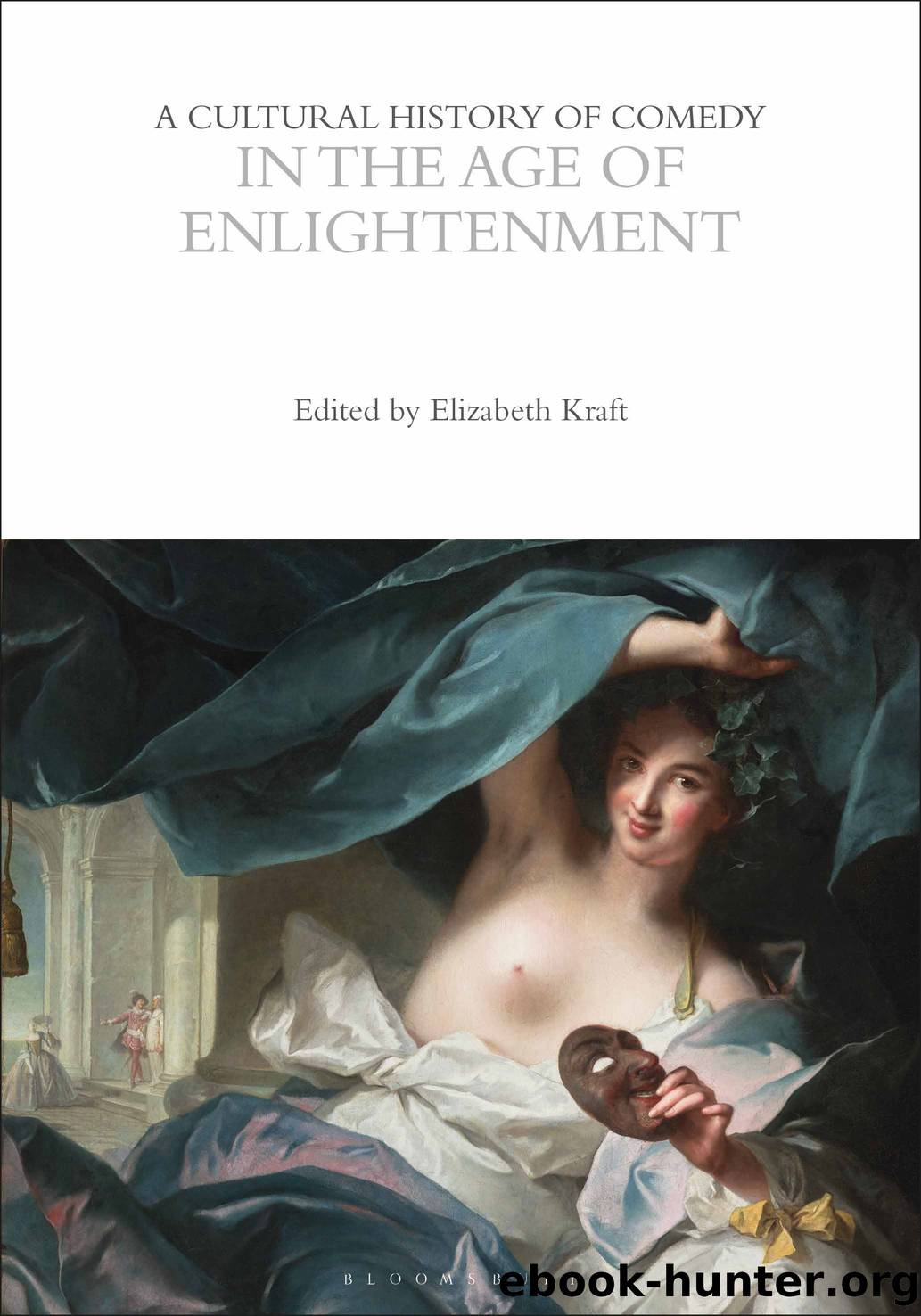A Cultural History of Comedy in the Age of Enlightenment by Elizabeth Kraft;

Author:Elizabeth Kraft; [Kraft, Edited by Elizabeth]
Language: eng
Format: epub
ISBN: 9781350187740
Publisher: Bloomsbury UK
Published: 2020-04-14T00:00:00+00:00
FIGURE 5.1: Charlotte Munson (Miranda), Charles Pasternak (Marplot), and Brian Mani (Sir Frances) in The Busy Body. Photo Brynn Yeager, 2017.
HARLEQUIN DANCER
While much of the history of comic embodiment in the eighteenth century must be sketched in the gaps, omissions, and interstices of the print record, the influence of continental practices, especially commedia dellâarte, is writ large. Commedia troupes toured England by the mid-sixteenth century had woven their stock characters, the zanni (servants), the old men, the lovers, and the military men, into Elizabethan comedy. Commediaâs groups of characters included low working-class tricksters, the âodd bodiesâ of the old men (pantaloons), soldiers (the Miles Gloriosus, Il Capitano), the doctor, and the hunchbacked servant (Pulcinella), along with the lovers (including Columbina, the witty servant), providing a set of types realized as actions.
Particular Renaissance players, including Richard Burbage and the clown Will Kemp, were directly involved with commedia productions. Commedia was thus both part of the English comic tradition and its useful other, illustrating the superiority of English wit and humor over pantomimeâs low physicality. Yet commedia also had some elite ties. John OâBrien argues that the resurgence of pantomime in the eighteenth century strengthened its Stuart connections through court masques under Charles I and the early commedia adaptations of the Restoration stage, including Ravenscroftâs Scaramouch a Philosopher (1677) and Behnâs The Emperor of the Moon (1687). OâBrien sees in Britainâs adopted commedia legacy a logic of Foucauldian âgovernmentality,â which imagines a population and its management through entertainment (OâBrien 2004: 45). His thesis about the political significance of pantomime and commedia grounds my approach to the kinetic logics that made bodies readable through the grammar of embodied affect and emotion that subtended the stage comedies of the eighteenth-century British stage.
Download
This site does not store any files on its server. We only index and link to content provided by other sites. Please contact the content providers to delete copyright contents if any and email us, we'll remove relevant links or contents immediately.
Spell It Out by David Crystal(35861)
Professional Troublemaker by Luvvie Ajayi Jones(29443)
We're Going to Need More Wine by Gabrielle Union(18663)
The Secret History by Donna Tartt(18266)
Cat's cradle by Kurt Vonnegut(14804)
The Goal (Off-Campus #4) by Elle Kennedy(13222)
The Social Justice Warrior Handbook by Lisa De Pasquale(11969)
The Break by Marian Keyes(9100)
Crazy Rich Asians by Kevin Kwan(8912)
Thirteen Reasons Why by Jay Asher(8490)
The remains of the day by Kazuo Ishiguro(8429)
Educated by Tara Westover(7706)
The handmaid's tale by Margaret Atwood(7477)
Win Bigly by Scott Adams(6846)
Giovanni's Room by James Baldwin(6838)
This Is How You Lose Her by Junot Diaz(6476)
The Rosie Project by Graeme Simsion(5871)
Six Wakes by Mur Lafferty(5860)
The Last Black Unicorn by Tiffany Haddish(5432)
